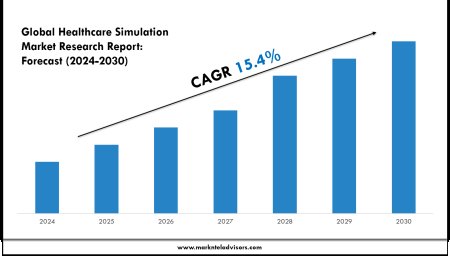Behind the Screens: The Rise of Digital Effects in Bollywood
Bollywood, India’s thriving film industry, has always been known for its vibrant storytelling, melodious music, and larger-than-life characters.
Bollywood, Indias thriving film industry, has always been known for its vibrant storytelling, melodious music, and larger-than-life characters. But over the last two decades, another element has been quietly revolutionizing how stories are told on the silver screen: visual effects, or VFX. Once considered a luxury reserved for Hollywood blockbusters, digital effects have now become a staple in Indian cinema, pushing creative boundaries and elevating storytelling to a whole new level.
From mythical epics to futuristic thrillers, VFX is enabling directors to visualize the impossible. Whether its creating ancient kingdoms, crafting high-octane action sequences, or simulating natural disasters, digital effects are now integral to the filmmaking process. In this blog post, well take a deep dive into how VFX has evolved in Bollywood, explore the factors behind its growing prominence, and look at what the future holds for this dynamic industry.
The Evolution of VFX in Indian Cinema
In the early 2000s, Bollywoods use of visual effects was minimal and often rudimentary. Films like Koi... Mil Gaya (2003) and Krish (2006) marked early attempts at integrating VFX into storytelling, but the technology and expertise available at the time limited what filmmakers could achieve.
The real game-changer came with Ra.One (2011) and Eega (2012), both of which showcased a significant leap in quality and ambition. These films were pivotal in establishing the credibility of Indian VFX on a global scale. However, it was the epic saga Baahubali: The Beginning (2015) and its sequel Baahubali: The Conclusion (2017) that truly redefined the visual possibilities in Indian cinema. The grandeur, scale, and seamless integration of visual effects in these films stunned audiences and critics alike, proving that Indian filmmakers could match and sometimes even outdo international standards.
Why Digital Effects Are Booming in Bollywood
Several key factors have contributed to the rapid rise of digital effects in Bollywood:
1. Rising Audience Expectations
With the global success of Hollywood blockbusters, Indian audiences have grown increasingly sophisticated and discerning. They expect the same level of technical brilliance and visual spectacle in local productions. To meet these expectations, Bollywood has embraced VFX as a necessary tool rather than an optional enhancement.
2. Budget Expansion and Technological Access
Bollywood productions now often come with hefty budgets, giving filmmakers the resources to invest in top-tier visual effects. Moreover, the cost of VFX technology has decreased significantly, making it more accessible even to mid-budget films. High-end software, advanced rendering engines, and faster processing capabilities have democratized digital effects across the industry.
3. Growth of Skilled Talent and Studios
India has become a global hub for post-production and digital effects, thanks to a growing pool of skilled VFX professionals and studios offering world-class services. Today, the country is home to some of the most renowned effects houses in Asia. In fact, many global productions outsource VFX work to India due to the combination of high quality and competitive pricing. For those looking to explore this industry further, identifying the best VFX company in India is a good starting point.
4. Cross-Industry Collaborations
Indian VFX studios increasingly collaborate with international teams, sharing knowledge, resources, and techniques. These collaborations enrich local expertise and ensure that Bollywood stays in sync with global trends. This also means Indian films can be visually on par with global cinema, whether they are released in domestic markets or overseas.
Iconic Bollywood Films That Redefined VFX
Some of the most iconic Indian films in recent years have relied heavily on digital effects:
-
Baahubali Series: As mentioned earlier, this franchise used cutting-edge VFX to create the fictional kingdom of Mahishmati, featuring everything from massive battles to floating palaces. The visuals were as much a part of the storytelling as the characters and plot.
-
Tanhaji: The Unsung Warrior (2020): This historical drama was lauded for its seamless blend of live-action and computer-generated imagery. The battle sequences and period landscapes were brought to life through meticulous visual effects.
-
Brahm?stra (2022): Touted as one of Bollywoods most ambitious projects, this film heavily leaned on digital effects to portray a fantasy universe filled with elemental powers, mystical symbols, and surreal action sequences.
-
RRR (2022): Directed by S.S. Rajamouli, RRR showcased jaw-dropping sequences like a man fighting a tiger and a climactic battle involving fire and water all brought alive through digital magic.
These films not only pushed the boundaries of what Indian cinema could look like but also demonstrated how essential VFX has become to telling compelling, imaginative stories.
VFX Beyond Just Spectacle
While VFX is often associated with high-fantasy or sci-fi films, its increasingly being used in subtler ways. Many contemporary Bollywood dramas and romantic comedies use digital effects for invisible tasks such as enhancing backgrounds, adjusting lighting, or simulating crowds that audiences may never notice. This invisible VFX is vital for improving production value without altering the storys grounded nature.
Moreover, VFX is being used in film restoration, digital de-aging of actors, and even resurrecting legendary performers through CGI. The line between whats real and whats digitally created is becoming increasingly blurred, adding a new dimension to how stories are visualized and presented.
The Economic Potential of VFX in India
As digital effects become more central to filmmaking, the industry is witnessing a surge in investment and job creation. VFX has emerged as a lucrative sector, attracting talent from fields like animation, game design, and computer science. With Indian VFX studios gaining international recognition, theres a growing interest among investors in backing companies driving this transformation.
Interestingly, this creative boom has parallels with Indias seasonal market cycles. For instance, just as consumer habits shift with seasons, certain sectors experience predictable surges. A recent feature on the 10 Best Summer Stocks draws similar attention to industries poised for seasonal growth much like the film industrys periodic VFX demands driven by big-ticket releases and festival-season films.
What the Future Holds
The future of digital effects in Bollywood looks promising. As India continues to invest in digital infrastructure and skill development, we can expect:
-
More original sci-fi and fantasy content tailored for Indian audiences
-
Increased international collaborations and co-productions
-
Wider adoption of virtual production technologies like LED volume stages (pioneered by shows like The Mandalorian)
-
Stronger presence of Indian VFX firms in global markets
Furthermore, with the rise of OTT platforms and demand for high-quality content, even web series and short-format videos are now using VFX to enhance their storytelling.
Conclusion
From humble beginnings to globally acclaimed blockbusters, the journey of digital effects in Bollywood has been nothing short of spectacular. What was once considered futuristic or far-fetched is now part of everyday filmmaking in India. VFX is no longer just about spectacle its a storytelling tool, a creative partner, and a booming industry with enormous economic potential.
As the screen behind the screen continues to expand, its clear that digital effects will play an increasingly vital role in shaping the future of Indian cinema. And whether you're a film enthusiast, a budding animator, or an investor exploring new frontiers, Bollywoods VFX revolution is a story worth watching and being part of.








































